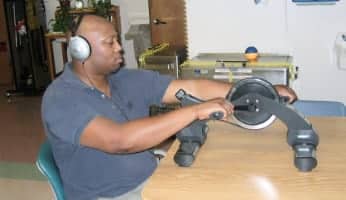Empowering Maddy’s Communication Journey: IM’s Impact Beyond Test Scores

Home - Testimonials - Pediatric Testimonials - Empowering Maddy’s Communication Journey: IM’s Impact Beyond Test Scores

Empowering Maddy’s Communication Journey: IM’s Impact Beyond Test Scores
Maddy is a 10-years-old girl who has been diagnosed with Autism. Maddy is one of five children, and lives at home with both her mother and father. She attended public school until second grade, which she had to repeat, and is currently being home-schooled.
Her mother expressed concerns about Maddy’s overall speech and language skills; she did not say “Mama” or “Dada” until approximately three years old.
She also reported that Maddy struggles in social interactions with peers and adults.
She can become very stressed out during situations that are noisy, chaotic and unfamiliar, and she expresses her anger or frustration in inappropriate ways, such as grunting or tantrums.
Introduction of IM Training
Maddy’s family and therapists decided upon a course of Interactive Metronome (IM).
IM is a brain-based rehabilitation assessment and training program developed to directly improve the processing abilities that affect attention, motor planning, and sequencing. A patented auditory-visual guidance system provides immediate feedback measured in milliseconds (ms), and a score is provided.
This, in turn, strengthens motor skills, including mobility, gross motor function, and many fundamental cognitive capacities such as planning, organizing and language.
Customized IM Strategies
During Maddy’s IM treatment, several strategies were tried in order to reflect natural environment conditions.
At first, Maddy scored in the extreme deficiency range on the long form assessment (LFA) with a baseline score of 282.1 ms. After a few months, Maddy made a 32% improvement with a score of 192.4 ms!
Two other tests were administered as well that measure ability and improvement in the areas that are treated by IM:
- The first was the CTOPP, which help identify people at risk for phonological processing difficulties related to listening comprehension, reading comprehension and mathematical calculations. The CTOPP subtests were designed to provide information for three areas: phonological awareness, phonological memory and rapid naming.
- The second was the TAPS-3, which is designed to provide information for four areas: auditory attention, basic phonemic skills, auditory memory and auditory cohesion.
Maddy’s Post IM Results
Based on raw scores, standard scores, percentiles, age equivalents and composite scores with the above measures, Maddy showed significant gains on both tests after receiving IM treatment.
She did particularly well in number memory and auditory reasoning.
Her phonological awareness jumped 12%, and her overall phonological skills showed yet another 32% improvement.
After her IM treatment, Maddy showed gains in phonological skills, language processing, auditory comprehension and auditory reasoning based on pre and post data.
But what test scores can’t show is that Maddy’s parents also report that she has made significant improvement on daily function and communication!




